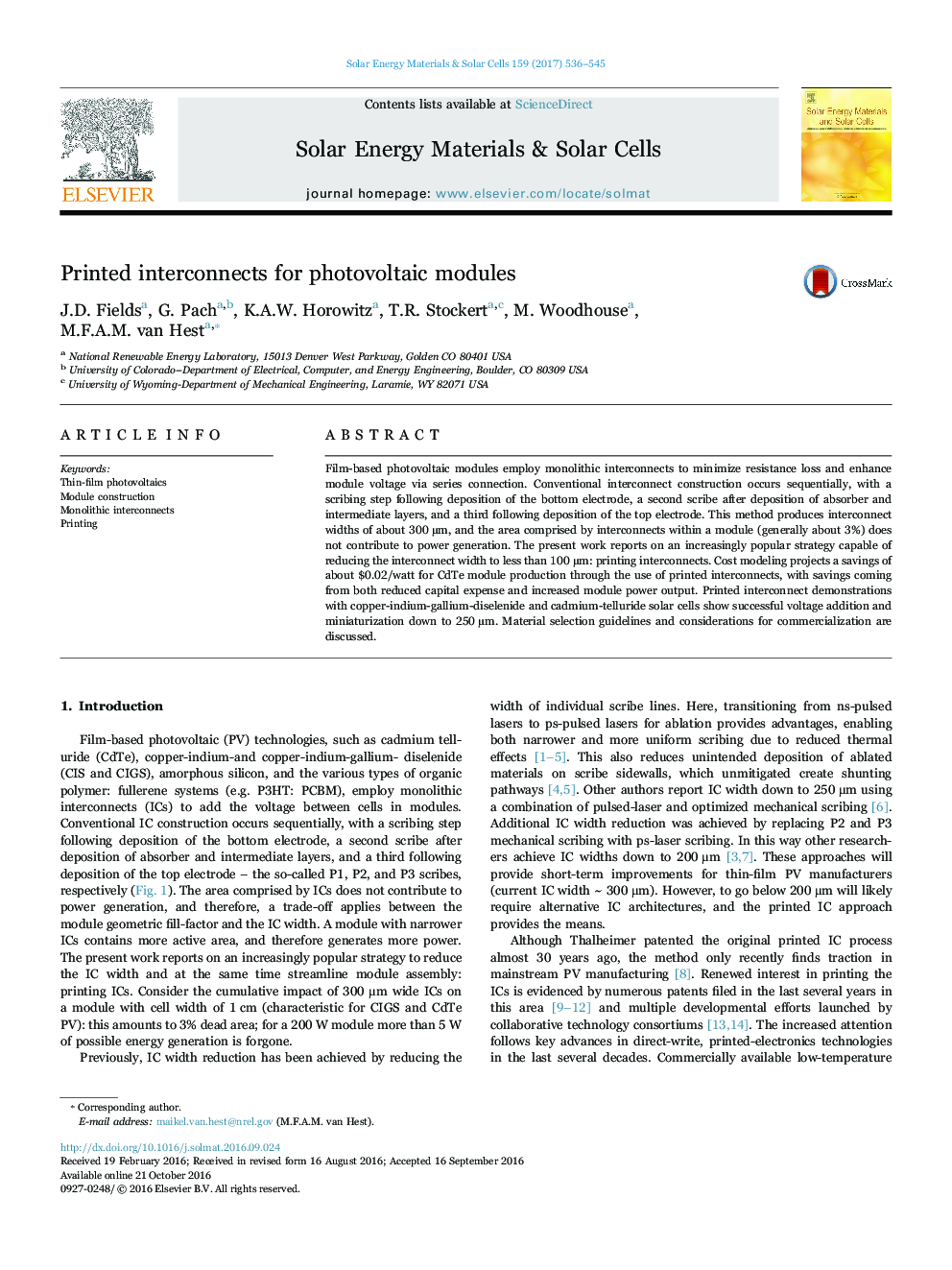| Article ID | Journal | Published Year | Pages | File Type |
|---|---|---|---|---|
| 6457582 | Solar Energy Materials and Solar Cells | 2017 | 10 Pages |
Film-based photovoltaic modules employ monolithic interconnects to minimize resistance loss and enhance module voltage via series connection. Conventional interconnect construction occurs sequentially, with a scribing step following deposition of the bottom electrode, a second scribe after deposition of absorber and intermediate layers, and a third following deposition of the top electrode. This method produces interconnect widths of about 300 µm, and the area comprised by interconnects within a module (generally about 3%) does not contribute to power generation. The present work reports on an increasingly popular strategy capable of reducing the interconnect width to less than 100 µm: printing interconnects. Cost modeling projects a savings of about $0.02/watt for CdTe module production through the use of printed interconnects, with savings coming from both reduced capital expense and increased module power output. Printed interconnect demonstrations with copper-indium-gallium-diselenide and cadmium-telluride solar cells show successful voltage addition and miniaturization down to 250 µm. Material selection guidelines and considerations for commercialization are discussed.
